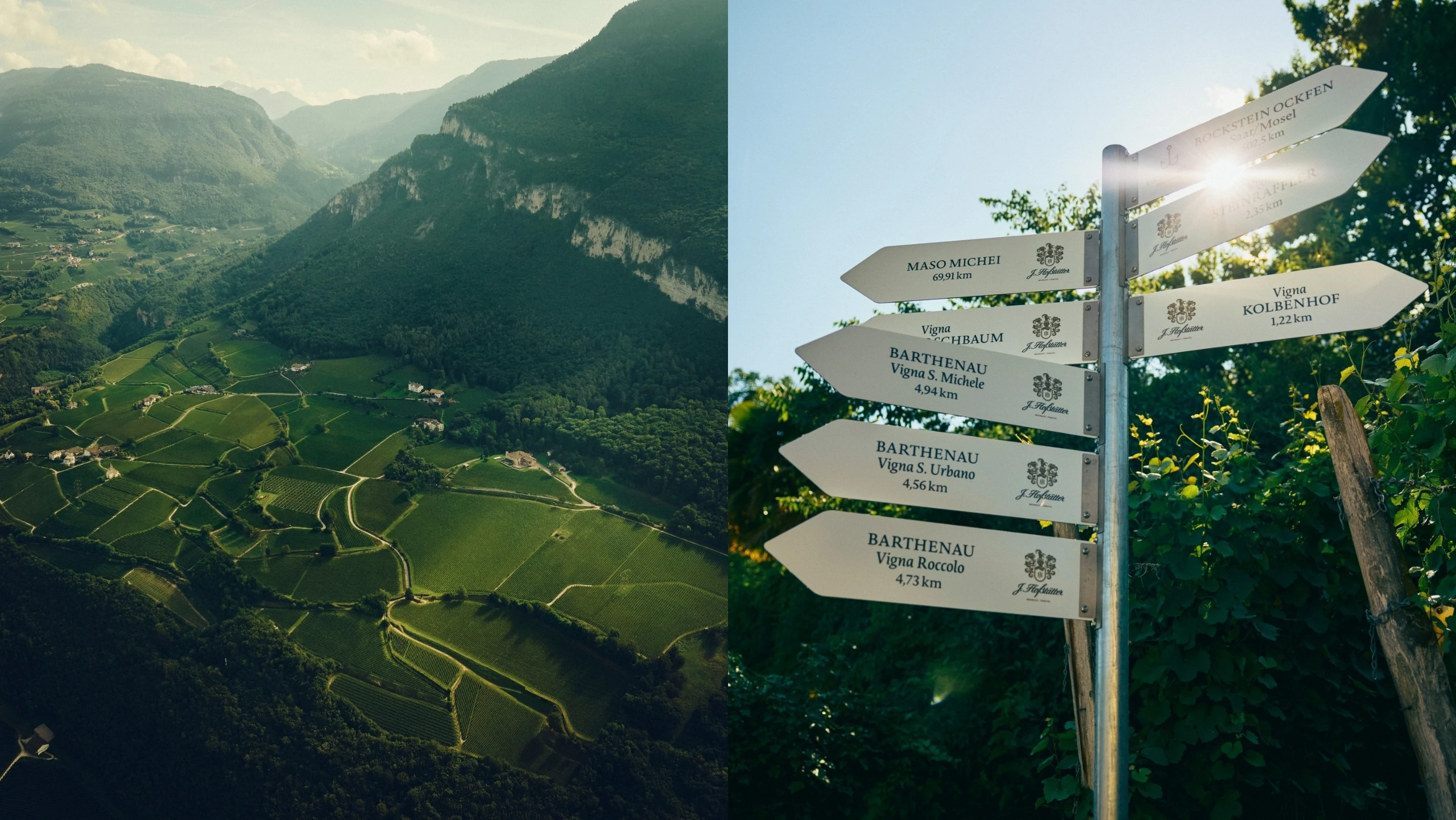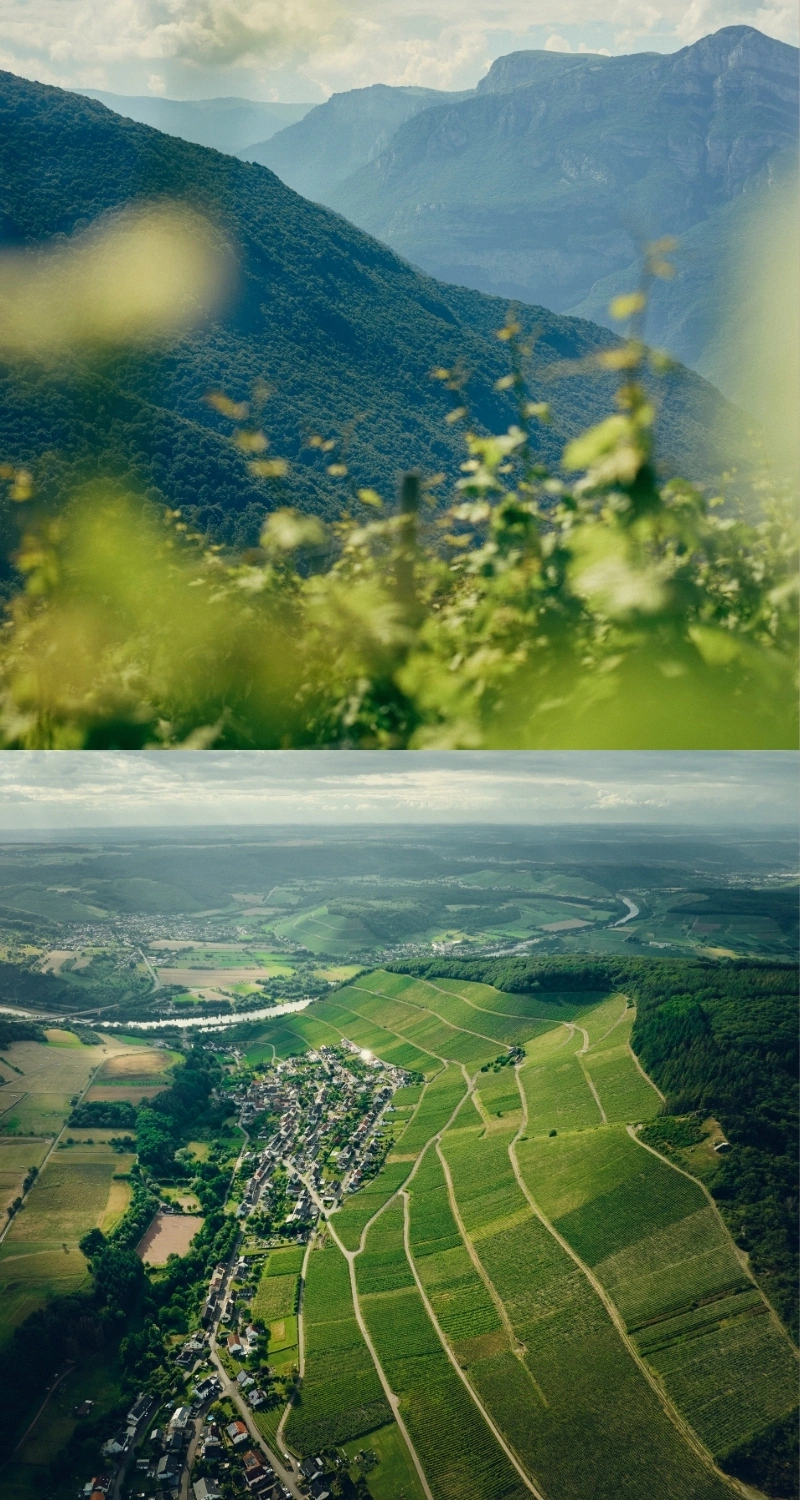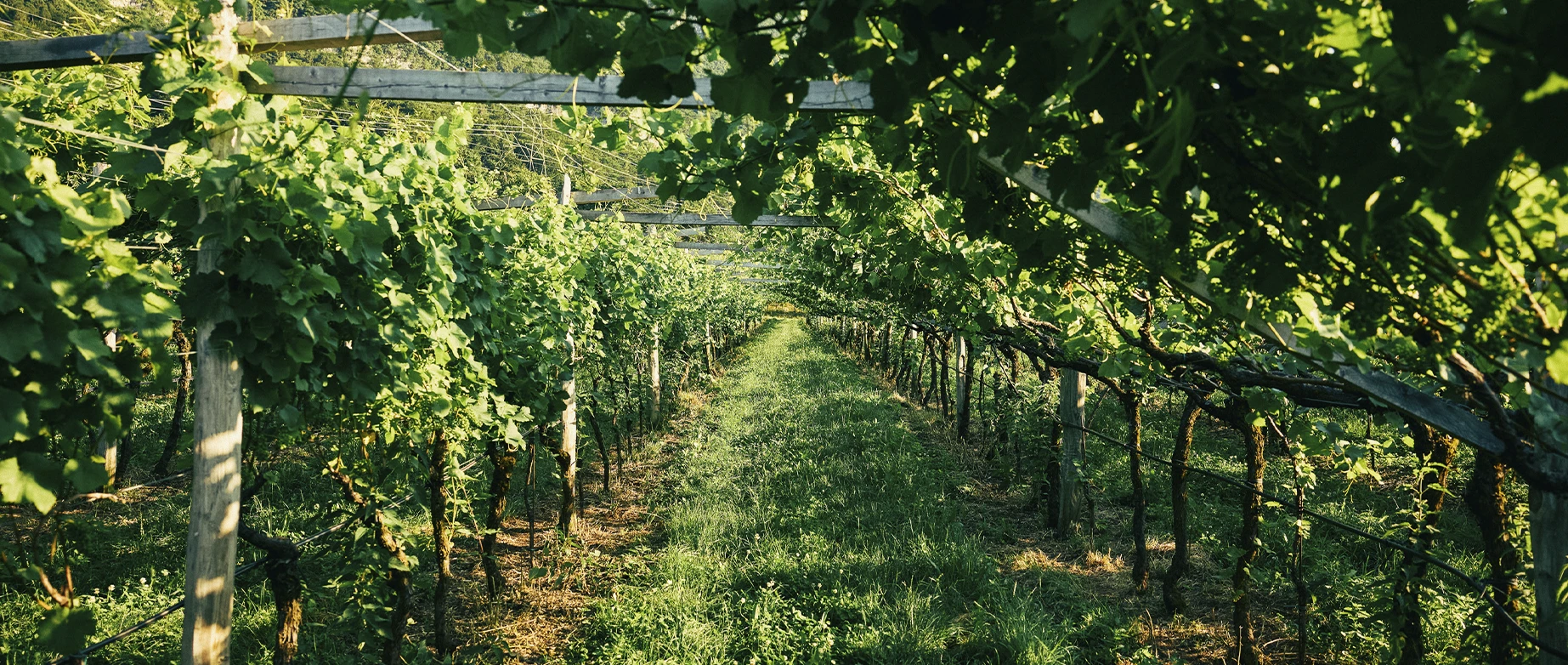Alto Adige, Trentino, Mosel – three wine regions that are uniquely distinct. J. Hofstätter is proud to possess exceptional single vineyards, each vinified separately and uncompromisingly. This meticulous approach allows the unique microclimate and specific soil characteristics to be perfectly expressed in every glass.
Our vineyards span both sides of the Adige Valley, Alto Adige’s lower region, encompassing the wine villages of Mazon/Mazzon, Tramin/Termeno, Söll/Sella, and Buchholz/Pochi.
In the “Piccole Dolomiti”, rising above the medieval town of Ala, Pinot Noir, Pinot Blanc, Sauvignon Blanc, and Chardonnay thrive at elevations of up to 850 meters.
Rieslings uniquely crafted here. Our steep slopes are located in the esteemed single vineyards of Ockfener Bockstein and Steinberger in Filzen.
ORIGIN
We believe a wine’s origin defines its unique identity. That’s why we vinify each wine individually, allowing it to become a true reflection of its vineyard. Shaped by the soil, location, and microclimate, each wine embodies its distinct character.
The single-vineyard concept is at the heart of what we do across all three regions: Alto Adige, Trentino, and the Mosel. This approach fosters diversity, all tied together by the one unmistakable signature of the Foradori Hofstätter family.


